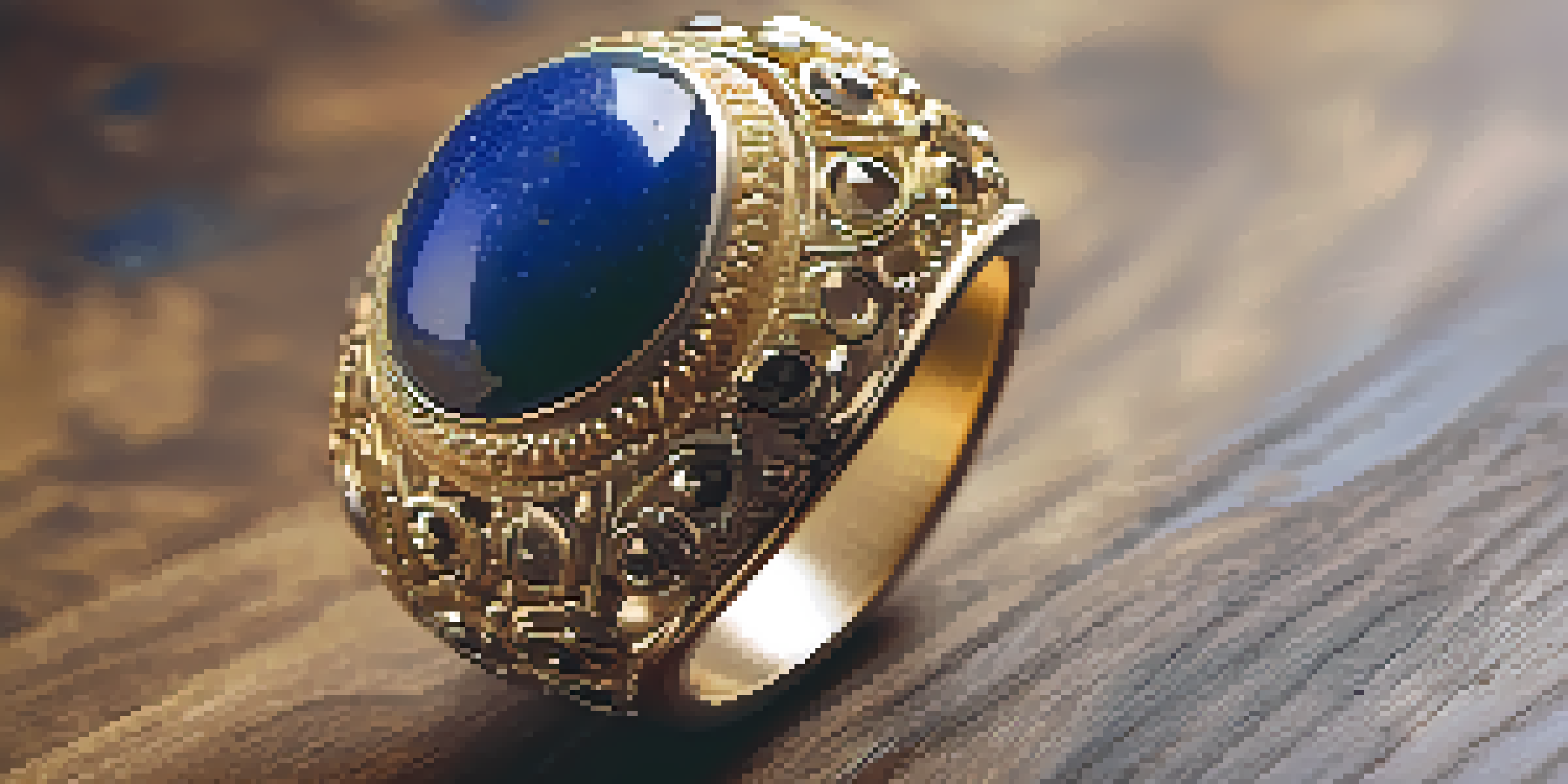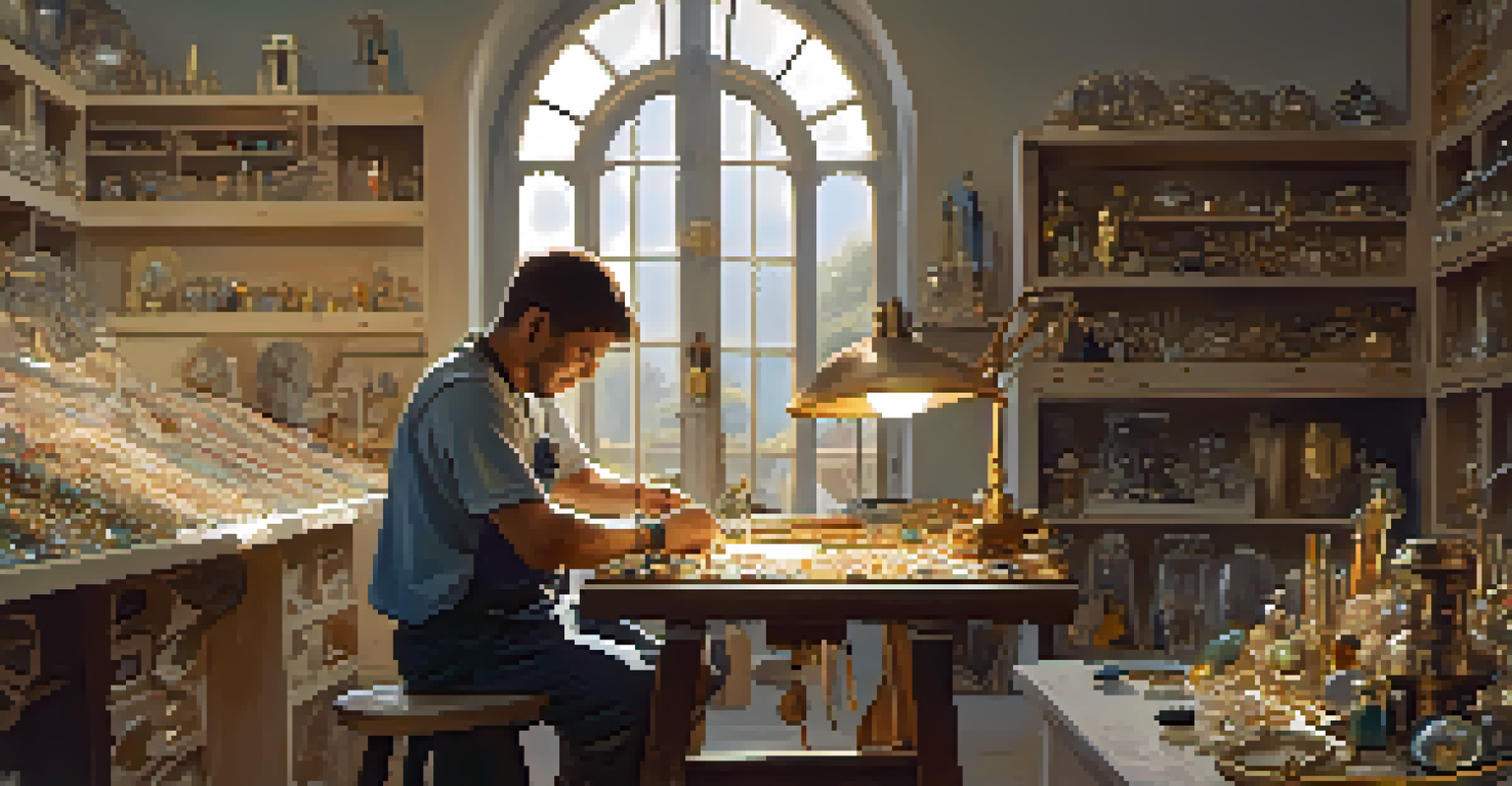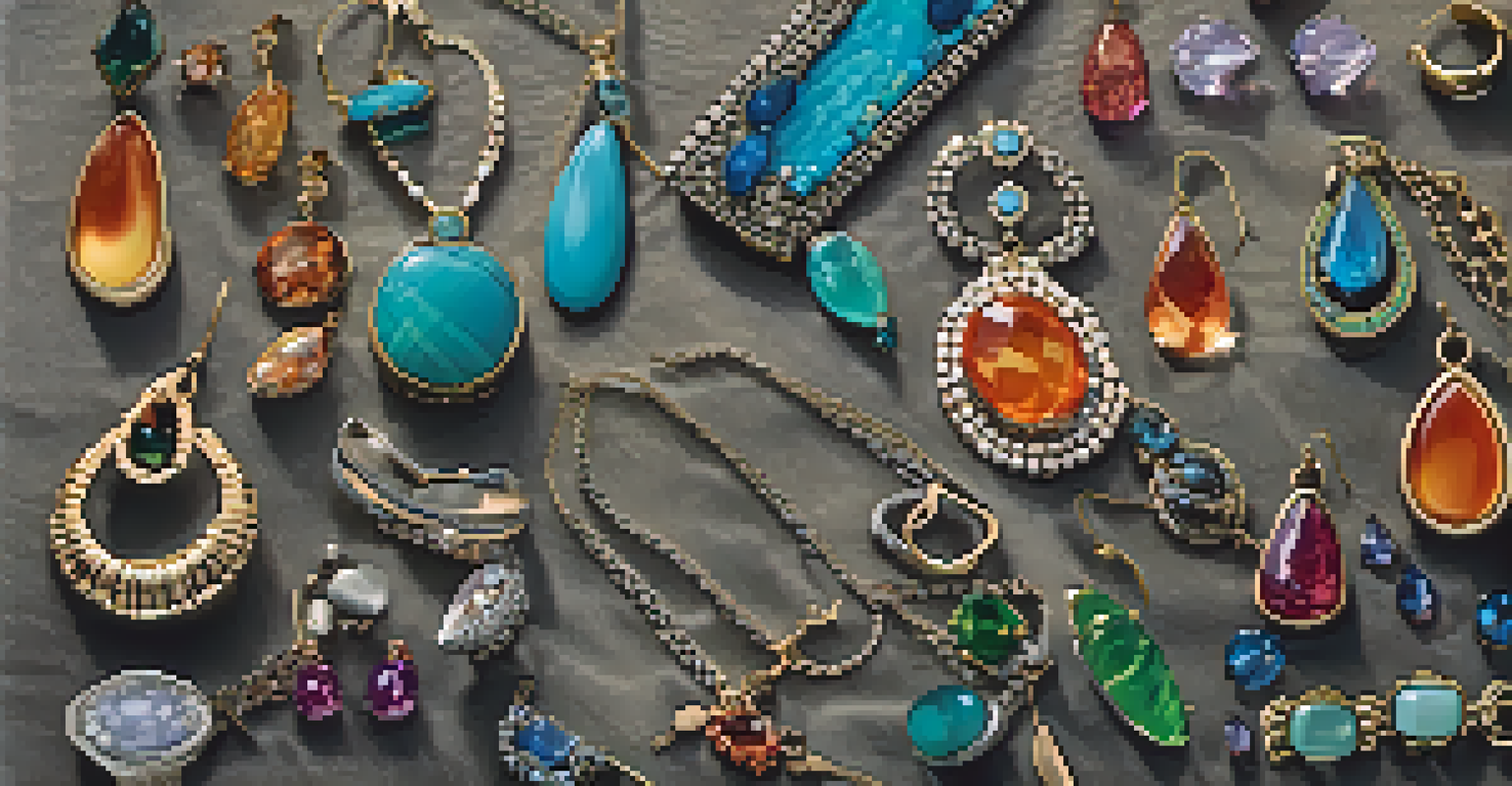Choosing the Right Materials for Your Jewelry Projects

Understanding Different Types of Jewelry Materials
When starting a jewelry project, it's crucial to understand the various materials available. From metals like gold and silver to alternative options such as resin or wood, each has its unique characteristics. Knowing the difference helps you choose materials that suit your design vision and durability requirements.
Jewelry is a very personal thing. It should tell a story about the person who’s wearing it.
For instance, while gold is a classic choice known for its luxury and longevity, sterling silver offers a more affordable option with a beautiful finish. On the other hand, resin can add vibrant colors and intricate designs to your pieces, making it ideal for artistic expressions. Ultimately, your choice of material sets the stage for your entire project.
So, take the time to explore each option. Consider how they will interact with each other, as well as their weight and feel. This foundational understanding will guide you in making informed decisions as you embark on your creative journey.
Assessing Durability and Wearability
Durability and wearability are essential factors when choosing materials for jewelry. After all, you want your creations to stand the test of time and be comfortable for the wearer. Some materials, like titanium or stainless steel, are known for their strength and resistance to tarnishing, making them perfect for everyday wear.

In contrast, delicate materials like pearls or certain gemstones may require more care and may not be suitable for daily use. Understanding the lifestyle of the wearer can help you select materials that will hold up to their daily activities while still looking gorgeous. For example, if you're designing a piece for someone who leads an active lifestyle, opting for sturdier materials is a must.
Choose Jewelry Materials Wisely
Understanding the characteristics of various materials, like metals and resin, is crucial for creating jewelry that meets your design and durability needs.
Ultimately, balancing aesthetics with practicality ensures that your jewelry remains beautiful and functional. Take into account how the material will respond to wear over time, and remember that some materials can be treated or coated to enhance their durability.
Considering Allergies and Skin Sensitivities
When creating jewelry, it's essential to consider potential allergies and skin sensitivities. Many people experience reactions to certain metals, such as nickel, which can cause irritation or rashes. This is particularly important if you're designing pieces for clients or as gifts, where you may not know the recipient's sensitivities.
Creativity is intelligence having fun.
Choosing hypoallergenic materials like titanium, surgical stainless steel, or sterling silver can help mitigate these risks. Additionally, natural materials like leather or organics can also be skin-friendly alternatives. Always communicate with your clients or loved ones to ensure their comfort and safety.
By being mindful of allergies, you not only show care for the wearer but also enhance the longevity of your creations. A piece that is comfortable to wear is much more likely to be cherished and worn often, making your thoughtful material choices all the more impactful.
Incorporating Color and Aesthetics
Color plays a significant role in jewelry design, and the materials you choose can greatly affect the overall aesthetic of your piece. From vibrant gemstones to muted metals, each material brings a unique palette to your creations. For example, pairing a deep blue lapis lazuli with warm gold can create a striking contrast that draws the eye.
Additionally, consider how different materials can complement or enhance each other. Mixing textures, like smooth glass beads with rough, unpolished stones, can add depth and interest to your design. Experimenting with color combinations allows you to express your creativity and personal style.
Consider Wearability and Durability
Selecting materials that balance beauty with practicality ensures your jewelry withstands daily use while remaining comfortable to wear.
Don't shy away from exploring unconventional materials, either. Incorporating elements like fabric or paper can introduce unexpected colors and textures, adding a unique twist to your jewelry. The key is to let your imagination guide you while keeping your artistic vision in mind.
Budgeting for Your Jewelry Materials
Budgeting is a crucial aspect of any jewelry project, as materials can vary significantly in price. Setting a clear budget helps you determine which materials are feasible for your design without overspending. While luxury materials like diamonds may be tempting, there are often beautiful alternatives that can achieve a similar look without breaking the bank.
Consider the overall cost of materials, including any additional supplies you may need, such as clasps or wires. By planning ahead, you can make informed choices that align with your budget while still allowing for creativity. For example, using high-quality base metals combined with less expensive gemstones can create stunning results without sacrificing quality.
Remember, budgeting doesn't mean compromising your vision; it means being resourceful. There are countless ways to achieve beautiful designs on a budget, from sourcing materials from local artisans to exploring online marketplaces for unique finds.
Sourcing Materials: Where to Find the Best Options
Finding the right sources for your jewelry materials can be an adventure in itself. Local craft stores often carry a variety of supplies, but don’t overlook online retailers and artisan marketplaces. These platforms can offer unique materials that you might not find in a traditional store, expanding your creative possibilities.
Visiting jewelry trade shows or craft fairs can also be a fantastic way to discover new suppliers and materials. These events often showcase unique, handmade, or ethically sourced options that can set your work apart. Networking with other artisans can provide valuable insights into where they source their materials, giving you access to resources you may not have known existed.
Budget Smartly for Materials
Setting a clear budget allows for creative freedom without overspending, enabling you to explore beautiful alternatives to expensive materials.
Additionally, consider supporting local artisans or businesses that prioritize sustainable practices. By choosing to source materials responsibly, you not only enhance your jewelry's story but also contribute positively to the community and environment.
Experimenting with Mixed Media and Techniques
One of the most exciting aspects of jewelry making is experimenting with mixed media. Combining various materials—like metals, beads, and textiles—can lead to innovative designs that stand out. For instance, incorporating fabric into metalwork can create a unique texture that adds a new dimension to your piece.
Don't be afraid to try new techniques, either. Techniques like wire wrapping, resin casting, or even embroidery can give your jewelry a distinctive flair. Each method opens up new possibilities for material combinations and aesthetic outcomes, encouraging you to push the boundaries of traditional jewelry design.

Embracing mixed media allows for personal expression and creativity in your work. Remember, there are no hard and fast rules in art—what matters most is how you feel about your creations. So, have fun, experiment, and let your imagination soar!